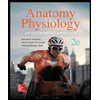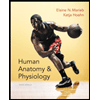Response Afferent Efferent Balance pathway pathway Effector Receptor Receptor IMBALANCE Control Center Stimulus Input IMBALANCE Output
Response Afferent Efferent Balance pathway pathway Effector Receptor Receptor IMBALANCE Control Center Stimulus Input IMBALANCE Output
Human Anatomy & Physiology (11th Edition)
11th Edition
ISBN:9780134580999
Author:Elaine N. Marieb, Katja N. Hoehn
Publisher:Elaine N. Marieb, Katja N. Hoehn
Chapter1: The Human Body: An Orientation
Section: Chapter Questions
Problem 1RQ: The correct sequence of levels forming the structural hierarchy is A. (a) organ, organ system,...
Related questions
Question

Transcribed Image Text:The image depicts a flowchart related to a feedback control system, likely illustrating a physiological process such as homeostasis. Here is a transcription of the elements and an explanation of the diagram:
### Transcription:
- **Left Column Buttons:**
- Response
- Balance
- Receptor
- Control Center
- Stimulus
- Input
- Output
### Diagram Explanation:
- The central diagram includes a sequence of steps that follow a circular path.
- **Receptor:** This is the starting point, which detects a change or stimulus.
- **Afferent Pathway:** The route through which the signal travels from the receptor to the control center.
- **Control Center:** This processes the information received and decides on the necessary response.
- **Efferent Pathway:** The route through which the control center sends the response to the effector.
- **Effector:** The segment that performs the necessary action to correct the imbalance.
- **Imbalance:** Indicated by a see-saw diagram at the bottom, showing how input and output strive for equilibrium.
This process visually represents how a control system maintains stability in a given environment by responding to changes or disturbances, ensuring balance is achieved through a series of well-organized actions.
Expert Solution
This question has been solved!
Explore an expertly crafted, step-by-step solution for a thorough understanding of key concepts.
This is a popular solution!
Trending now
This is a popular solution!
Step by step
Solved in 3 steps with 1 images

Recommended textbooks for you

Human Anatomy & Physiology (11th Edition)
Anatomy and Physiology
ISBN:
9780134580999
Author:
Elaine N. Marieb, Katja N. Hoehn
Publisher:
PEARSON

Anatomy & Physiology
Anatomy and Physiology
ISBN:
9781259398629
Author:
McKinley, Michael P., O'loughlin, Valerie Dean, Bidle, Theresa Stouter
Publisher:
Mcgraw Hill Education,

Human Anatomy
Anatomy and Physiology
ISBN:
9780135168059
Author:
Marieb, Elaine Nicpon, Brady, Patricia, Mallatt, Jon
Publisher:
Pearson Education, Inc.,

Human Anatomy & Physiology (11th Edition)
Anatomy and Physiology
ISBN:
9780134580999
Author:
Elaine N. Marieb, Katja N. Hoehn
Publisher:
PEARSON

Anatomy & Physiology
Anatomy and Physiology
ISBN:
9781259398629
Author:
McKinley, Michael P., O'loughlin, Valerie Dean, Bidle, Theresa Stouter
Publisher:
Mcgraw Hill Education,

Human Anatomy
Anatomy and Physiology
ISBN:
9780135168059
Author:
Marieb, Elaine Nicpon, Brady, Patricia, Mallatt, Jon
Publisher:
Pearson Education, Inc.,

Anatomy & Physiology: An Integrative Approach
Anatomy and Physiology
ISBN:
9780078024283
Author:
Michael McKinley Dr., Valerie O'Loughlin, Theresa Bidle
Publisher:
McGraw-Hill Education

Human Anatomy & Physiology (Marieb, Human Anatomy…
Anatomy and Physiology
ISBN:
9780321927040
Author:
Elaine N. Marieb, Katja Hoehn
Publisher:
PEARSON